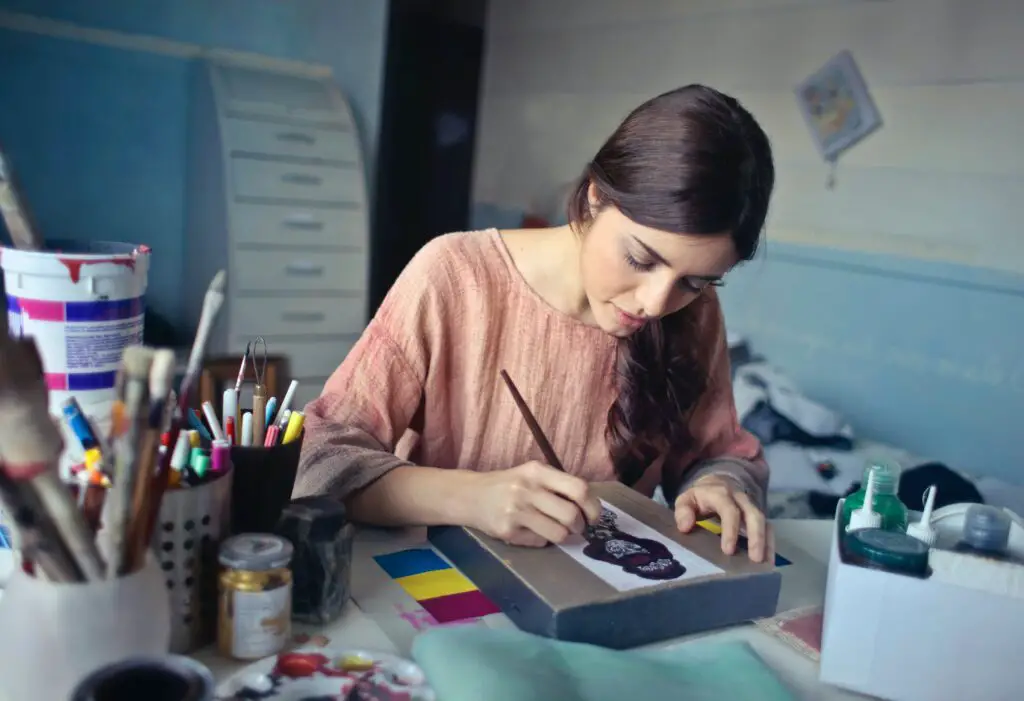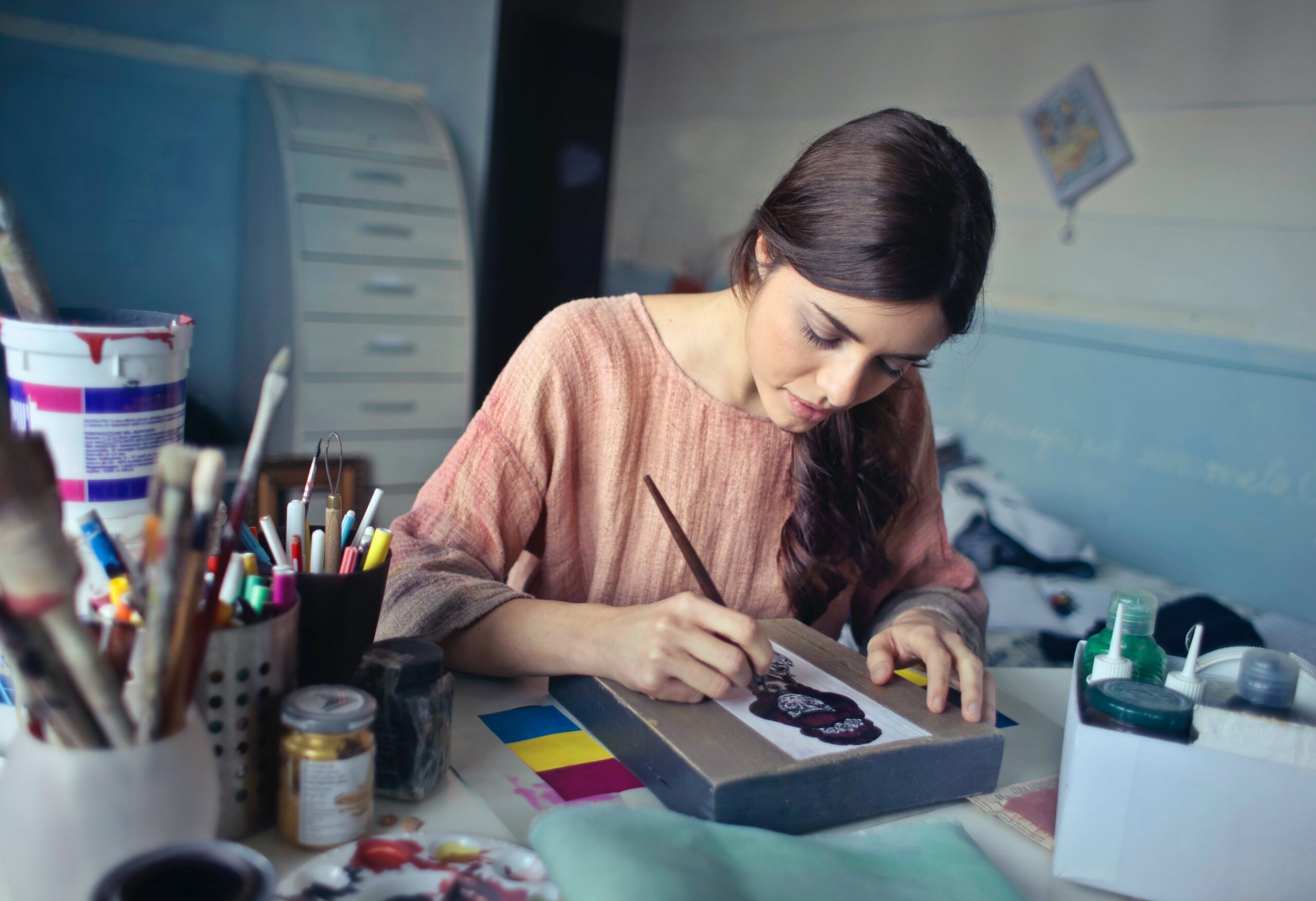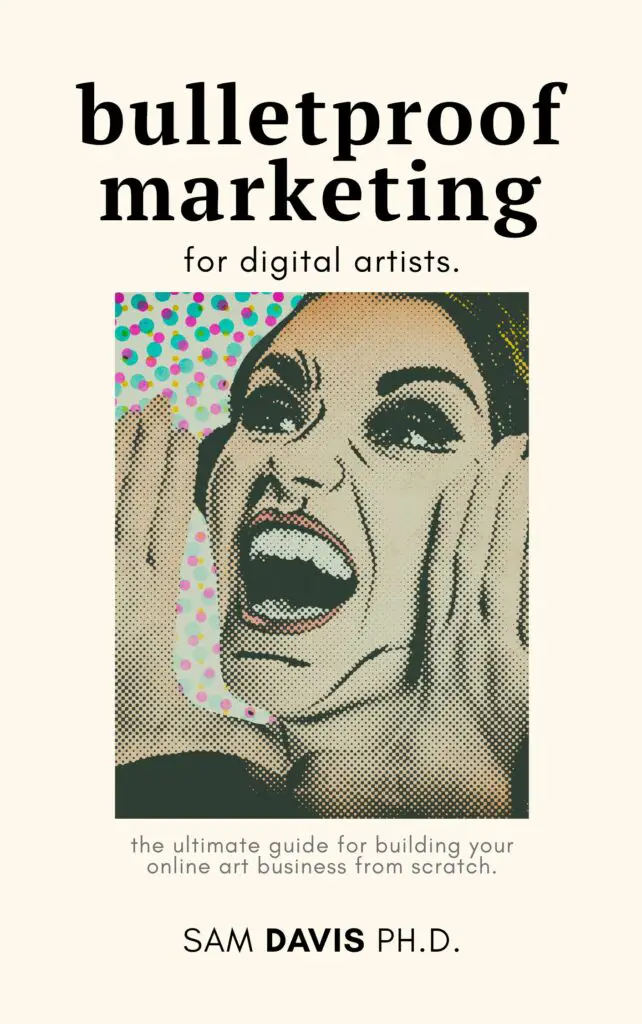As an artist, your work is an extension of yourself. You pour your heart and soul into each piece, and the last thing you want is to be held back by a workspace that causes discomfort or pain. An ergonomic desk setup can help you avoid these issues, allowing you to focus on what truly matters – creating art. In this blog post, we will guide you through the importance of an ergonomic workspace for artists. We will discuss the risks of non-ergonomic workspaces and highlight essential elements of a comfortable setup that includes selecting the right chair, maintaining ideal desk height, and correct monitor positioning. The role of ergonomics in creative productivity cannot be overstated, and we will explain how good lighting and noise levels impact creativity. Finally, we will tailor ergonomics to your artistic workflow by designing a clutter-free workspace and incorporating movement into your work routine. We will also showcase how choosing ergonomic accessories enhances art creation, making sure that all aspects of your workspace are optimized for your artistic expression.

Understanding the Importance of an Ergonomic Desk Setup
An ergonomic desk setup is essential for artists as it provides numerous benefits. Firstly, it reduces the risk of back pain and eye strain, ensuring a comfortable working environment. By promoting a neutral posture, an ergonomic desk setup also helps in reducing the risk of injury. Additionally, setting up an ergonomic workspace improves overall comfort and productivity, allowing artists to work for longer periods without discomfort. Investing in an ergonomic desk setup is a great way to enhance long-term health and well-being. This setup minimizes strain on the neck, back, and wrists by providing proper support and alignment. By incorporating these ergonomic principles into the workspace, artists can create a healthy and productive environment for their artistry.
The Connection between Artistry and Ergonomics
When it comes to artistic work, proper ergonomics play a crucial role in supporting the physical demands and enhancing focus and creativity during the creative process. An ergonomic desk setup is essential for artists as it prevents physical strain and allows them to work for longer periods of time without experiencing discomfort or fatigue. Achieving optimal performance and artistic expression requires the right ergonomic setup, including factors such as correct chair height, desk space organization, and monitor positioning. By promoting a healthier work environment, ergonomics in the workspace benefits artistic work and helps prevent conditions like carpal tunnel syndrome and back pain. Incorporating the expertise of occupational therapists and ergonomics experts can ensure that artists maintain the right posture, take regular breaks, and make necessary adjustments to their workspace at regular intervals. The connection between artistry and ergonomics is undeniable, and implementing ergonomic principles can greatly enhance an artist's workflow and overall well-being.
The Risks of Non-Ergonomic Workspaces for Artists
Non-ergonomic workspaces pose serious risks to artists, impacting their ability to work effectively. Chronic pain is a common consequence of working in non-ergonomic environments, affecting an artist's productivity. Musculoskeletal disorders can also develop due to the lack of ergonomic support, further hindering an artist's ability to create. Fatigue is another issue that arises from poor ergonomics, leading to decreased productivity and creativity. The risk of repetitive strain injuries is heightened in non-ergonomic workspaces, compromising the quality of an artist's work. Artists working in such environments are more prone to physical discomfort, which can negatively impact their inspiration and artistic expression. To prevent these risks, it is crucial for artists to prioritize ergonomic considerations in their workspace design and setup.
Essential Elements of an Ergonomic Workspace for Artists
Choosing the right chair with lower back support is crucial for maintaining a good posture while working. Adjusting the desk height to the correct level helps prevent strain on the neck, back, and shoulders. It's also important to position the monitor at eye level, which reduces the risk of eye strain and neck pain. An ergonomic workspace for artists should include good lighting to minimize eye strain and headaches. Additionally, maintaining a clutter-free workspace promotes a focused and ergonomic work environment. By incorporating these essential elements into their workspace, artists can create a comfortable and productive environment that enhances their creative process.
Selecting the Right Chair for Posture Support
Selecting the right chair for posture support is crucial for maintaining a healthy and comfortable workspace. An ergonomic chair with adjustable height and back support provides optimal posture support, allowing you to adjust it to your specific needs. Look for a chair with armrests that promote a relaxed position, reducing strain on the neck and shoulders. Additionally, choosing a chair with lumbar support helps maintain the natural curve of the lower spine, preventing back pain during long work hours. To enhance overall posture, consider opting for a chair with a footrest for proper leg support. By selecting a chair with these features, you can ensure that your workstation promotes good posture and minimizes the risk of discomfort or injury.
Maintaining Ideal Desk Height for Comfort
To maintain an ideal desk height for comfort, it is important to set the desk at the correct level. Make sure your forearms rest comfortably at a 90-degree angle when typing or using the mouse. This adjustment minimizes strain on the neck, back, and wrists, promoting a neutral position that reduces the risk of injury. Setting the desk at the right height also encourages good posture and helps to avoid slouching. Remember to take regular short breaks and stretch to alleviate any strain caused by a desk that is too low or high. By following these guidelines, you can create an ergonomic desk setup that promotes comfort and productivity during long hours of work.
Importance of Correct Monitor Positioning
Positioning your monitor correctly is crucial for maintaining a healthy and ergonomic workspace. Placing the monitor at eye level not only reduces strain on the neck but also prevents eye strain. It ensures a neutral posture, minimizing the risk of back pain. Maintaining the correct eye level helps you maintain good ergonomic posture throughout your workday. On the other hand, incorrect monitor positioning can lead to neck pain, headaches, and eye strain. To achieve the ideal monitor height, consider using a monitor arm or laptop riser, allowing you to easily adjust the monitor to the correct position. By prioritizing correct monitor positioning, you can create a comfortable and ergonomic workspace that promotes productivity and overall well-being.
The Role of Ergonomics in Creative Productivity
Creating a workspace that prioritizes ergonomics is essential for artists, as it directly impacts their creative productivity. Good lighting is crucial in enhancing creativity while reducing eye strain and headaches. By providing a focused environment, an ergonomically designed workspace boosts creative productivity. Moreover, a comfortable work environment achieved through ergonomics significantly improves the quality of artistic work. Ergonomics also plays a vital role in minimizing physical discomfort, allowing artists to work for long periods without strain. By supporting the physical, mental, and emotional well-being of artists, the right ergonomic setup enhances their creative output.
The Influence of Good Lighting
Good lighting in a workspace has a significant influence on an artist's productivity and creativity. Adequate natural light not only boosts mood but also enhances the overall visual experience, reducing eye strain. Additionally, well-lit workspaces promote accurate color perception, allowing artists to work with precision and accuracy. Good lighting conditions create a positive work environment, which plays a crucial role in an artist's creative process. Balancing natural light with adjustable artificial lighting ensures a comfortable work environment for artists. By incorporating proper lighting into their ergonomic desk setup, artists can optimize their workspace and improve their overall artistic output.
The Impact of Noise Levels on Creativity
A quiet workspace is essential for artists to minimize distractions and fully focus on their creative process. Research has shown that high noise levels can significantly hinder an artist's ability to concentrate, ultimately affecting the quality of their work. To create a conducive environment for creativity, many artists invest in noise-cancelling headphones or set up a soundproofing system. These tools help block out external noise and create a peaceful atmosphere where artists can immerse themselves in their work. Distractions caused by noise can disrupt the artistic flow and hinder overall productivity. That's why maintaining a quiet and peaceful work environment is crucial for artists to promote a harmonious space for their creative process.
Tailoring Ergonomics to Your Artistic Workflow
When it comes to your artistic workflow, it's important to create a workspace that caters to your unique needs. Consider the height of your desk, chair, and easel to ensure optimal posture while you work. Adjustable lighting is crucial for reducing eye strain, especially when working on intricate details. Ergonomic tools, such as a wrist rest, can help prevent discomfort during long drawing sessions. Don't forget to take regular breaks to stretch and give your eyes a rest, maintaining a healthy work routine. By tailoring ergonomics to your artistic workflow, you'll be able to create in a comfortable and efficient manner.
Designing a Clutter-Free, Inspiring Workspace
When designing your workspace, it's essential to create a clutter-free environment that inspires creativity. Start by clearing your desk of unnecessary items, allowing for a clean and organized space. Utilize storage solutions like shelves or drawers to keep your art supplies neatly arranged and within reach. Personalize your workspace with inspiring artwork, plants, or natural light to create a visually appealing and motivating atmosphere. It's also crucial to ensure a good balance of space for your arm movements, workspace, and tools. By keeping the desk surface clean and free from clutter, you can easily access your most-used materials without any distractions. Designing a clutter-free, inspiring workspace sets the stage for productive and inspiring artistic endeavors.
Incorporating Movement into Your Work Routine
Incorporating movement into your work routine is essential in maintaining a healthy and productive workflow. Taking short breaks to stand, stretch, or walk can greatly promote blood circulation and prevent the risk of lower back pain. Consider using a standing desk setup that allows you to alternate between sitting and standing positions throughout the day. This helps alleviate the strain on your muscles and encourages a more ergonomic posture. Additionally, practicing stretching exercises focusing on the neck, back, and wrists can help relieve tension and prevent conditions like carpal tunnel syndrome. Invest in ergonomic chairs that support natural movement and posture, as well as footrests that encourage a comfortable position while seated. By incorporating these simple yet effective strategies, you can significantly improve your overall work experience.
Choosing Ergonomic Accessories for an Artist's Desk
Investing in an adjustable chair with lumbar support is a great way to enhance back posture while working at your artist's desk. This will help alleviate any discomfort in the lower back and promote a healthier sitting position. Additionally, using an ergonomic keyboard and mouse can significantly reduce strain on the hands and wrists, preventing conditions like carpal tunnel syndrome. Consider adding a monitor arm to your desk setup, allowing easy adjustment of the screen's height and position, ensuring it is at arm's length and aligned with the top line of your vision. To prevent neck strain, a laptop stand can be used to position the screen at eye level. Lastly, exploring ergonomic desk risers can provide adjustable height options, allowing you to customize your workspace and find the correct height for your needs.
How do Ergonomic Tools Enhance Art Creation?
Ergonomic tools play a vital role in enhancing art creation. Grip-enhancing paintbrushes promote a natural hand position, reducing strain. Ergonomic pencil grips minimize fatigue during long drawing sessions. Lightweight and adjustable easels offer comfort and flexibility. Ergonomic tablet stands provide a comfortable position for digital art creation. Glare-reducing desk lamps improve visibility while working on art projects.
Conclusion
Creating an ergonomic desk setup is crucial for artists who spend long hours working on their craft. It not only helps prevent physical discomfort and strain but also enhances creativity and productivity. By understanding the importance of ergonomics, artists can optimize their workspace to support their artistic process.
Key elements of an ergonomic desk setup for artists include selecting a chair that provides proper posture support, maintaining an ideal desk height for comfort, and ensuring correct positioning of the monitor. Additionally, factors like good lighting and minimizing noise levels can significantly impact creativity.
Tailoring ergonomics to your artistic workflow involves designing a clutter-free and inspiring workspace and incorporating movement into your work routine. Ergonomic accessories such as adjustable desks, ergonomic tools, and supportive equipment can further enhance the art creation process.
By prioritizing ergonomics in your artistic workspace, you can create a comfortable and efficient environment that supports your artistic vision and minimizes the risk of strain-related injuries. Remember, investing in your physical well-being as an artist is an investment in your creative journey.

